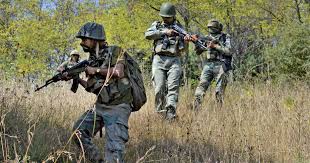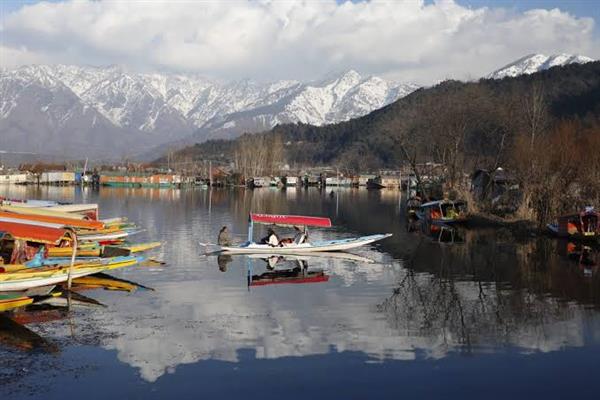As winter chill has gripped Kashmir and electricity is playing hide and seek, it is a struggle of sorts for people living in the landlocked region these days. But the situation is even worse for militants. Isolated places, like under-construction buildings, orchards and forests, which served as a safe haven during summers, have turned uninhabitable due to sub-zero temperatures.
With the winter setting in and snow expected to fall in Kashmir in the second week of this month, security forces are anticipating an increase in encounters since militants, according to sources, are leaving their hideouts in search of warmer places. But unlike early nineties, now forces hardly face the daunting task of conducting house-to-house searches, particularly in southern Valley. Militancy remains extremely popular, despite a massive crackdown by forces, and people are ready to provide accommodation to the rebels.
But, unlike previously, militants are falling to bullets like never. At least 200 militants have been killed in 2017, the highest in the past seven years, and the year is yet to end. Officials say this is the best time when a militant is trapped and eliminated, if he is not ready for surrender.
That is exactly what happened last week, when militants were coming down from a forest in Zurhama in Keran sector Kupwara in north Kashmir. They were ambushed. In the gunfight that ensued, two Indian Army soldiers were killed and four others injured. But forces failed to nab the militants. The search continued for a week and ended on Wednesday. The militants seemed to have escaped from the forests. Now, the officials say, as the militants are moving towards plains, more gunfights are expected in coming days.
“This will continue till the last militant is alive,” said Munir Khan, the Inspector General of Police in Kashmir, adding, “The winters are the best time to engage as the forests become unbearable to live for them.”
At least five militants were killed on Thursday in two different gunfights in central and north Kashmir, as the focus seems to have shifted away from the volatile south. It is here where most of the militants prefer to stay deep inside jungles instead of being active in the mainland. But senior officials say the fight between forces and militants is not going to be easy in north and central Kashmir. Majority of the militants are foreigners and better trained, as compared to a local Kashmiri militant.
In central Kashmir’s Budgam district, the government forces on Thursday morning launched a massive cordon and search operation after receiving input about the presence of militants. The gunfight soon ensued on at Futlipora area of Pakherpora. As the forces zeroed in on the house, the militants opened fire, pushing back a column of forces who were coming close to the house.
“This triggered a fierce gun battle,” spokesperson for Jammu and Kashmir policeman Manoj Pandita, said. A statement by Kashmir police later said four militants, including a commander of LeT, were killed in the encounter with forces in Futlipora area and Bomai area of North Kashmir’s Sopore.
Director General of Police, Shesh Paul Vaid, said after the killing of militants that it was huge landmark for “establishing peace.” “This marks a huge landmark for establishing peace and stability in the state of J&K and our country,” DG Vaid, tweeted.
From 1 January to 30 November, the government forces have killed at least 200 militants during counter-insurgency operations, majority of them in southern Valley, and the highest since 2010. The Valley could witness more of these gunfights in the coming days, as the network of informers, most of them Kashmiris and real time intelligence providers, would be keeping a tap on the movement of militants in the villages and town.
Central Kashmir’s Budgam district has seen relatively less violence as compared to south and north. But an Indian Army officer said recently they had information about militants roaming in the villages of Budgam district bordering Pulwama, Shopian and Poonch and they were trying to make a contact with the group.
Central Kashmir — which constitutes Srinagar, Budgam and Ganderbal districts — has become the focus of militants recently. On 17 November, forces killed Mugees Ahmad Mir alias Khatib of Ansar Ghazwat-ul-Hind, led by Zakir Musa, who was active for some time, in a shootout on the outskirts of Srinagar. An ASI of the Kashmir police was also killed during the shootout.
After the killing of Burhan Wani, Srinagar district, which was declared militancy-free several years ago, also witnessed an uptick in youth joining militancy. There are at least five militants active in the city but intelligence officials say militants from south Kashmir often come to live in the city during winter months.
Mir Tufail, a resident of Parimpora on Srinagar’s outskirts, was the fifth Srinagar youth to have joined militancy in the past one year. The 18-year-old college student had gone missing from his home in May. However, Mugais was the first militant from Srinagar to have migrated to south Kashmir and joined Musa’s group.
On Thursday afternoon, another militant was killed in Sagipora area of north Kashmir’s Sopore after a gunfight erupted between militants and the government forces in the area. At the time of writing this report, the encounter was going on.
Harmeet Singh Mehta, the SSP of police in Sopore, told Kashmir Post that at least three militants were present in the area and immediately after getting the information, the forces launched an operation with CRPF.
“One militant was killed in the initial gunfight,” Mehta said. “They fired at the search party. One Jawan was injured. We are still searching for the militants.”
In recent weeks, the number of gunfights have suddenly seen uptick in both central and north Kashmir. Forces say the number of gunfights might be more as compared to last year during winters as well. Which doesn’t bode well, either for the Centre’s point man Dineshwar Sharma — who is looking to find a ‘permanent solution’ to Kashmir problem — or Chief Minister Mehbooba Mufti who has openly called for an end to anti-militancy ops as a confidence-building measure for talks. Is New Delhi listening?






